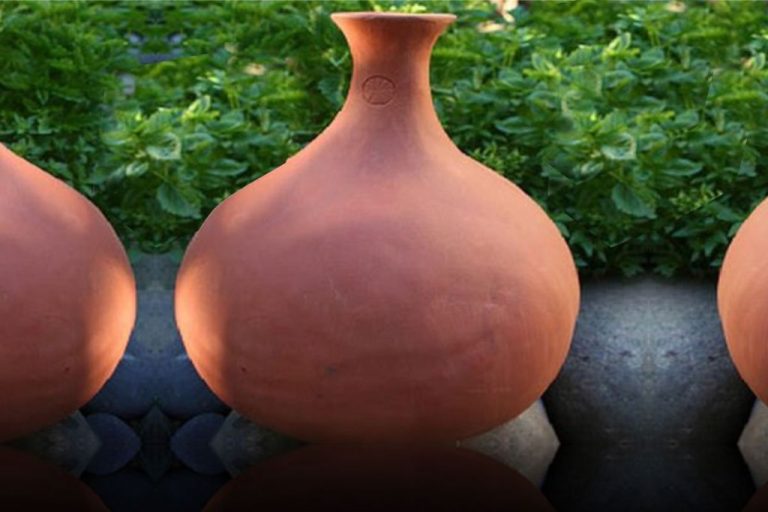How Do I Make Clay Blocks?
Clay blocks are a type of building material made primarily from clay. They are formed into rectangular blocks that are dried and then fired at high temperatures to harden them. Clay blocks have been used in construction for thousands of years, and continue to be popular today due to their versatility, durability, and sustainability.
Clay blocks offer numerous advantages for building and construction. They provide good thermal mass, meaning they absorb heat during the day and release it at night, helping regulate interior temperatures. Clay blocks are also naturally fireproof and resistant to damage from pests, mold, and mildew. Structures built from clay blocks tend to be extremely durable, with some clay buildings lasting for centuries with minimal maintenance.
From an environmental standpoint, clay blocks represent a sustainable building material. They are composed of all-natural clay, require relatively low processing energy to manufacture, and can be recycled or safely returned to the earth at end of life. Clay blocks have excellent moisture management properties, allowing structures to “breathe” while also resisting water damage. Overall, clay blocks remain a time-tested, eco-friendly construction material with many modern applications.
Required Materials
The main materials required for making clay blocks are:
- Clay soil – This provides the binding properties and plasticity needed to form the blocks. The best clay for block making contains about 50% fine clay particles.
- Sand – This is added to the clay soil to reduce shrinkage and cracking. Builder’s sand or river sand works well. Aim for a mix of 70% clay soil to 30% sand.
- Water – Added to the clay and sand to reach the proper consistency for molding. Not too wet or dry. The amount varies based on clay type.
- Molds – Wood or steel molds with open tops and bottoms are required to form the blocks. Molds with dividers allow multiple blocks per mold.
Having these basic materials on hand allows you to create the clay blocks from scratch.
Clay Preparation
Proper clay preparation is essential for making high quality clay blocks. It involves testing and selecting the right type of clay, removing any impurities, and mixing with sand.
Start by obtaining natural clay soil, preferably with high clay content. Take samples to test the clay’s suitability. One simple test is called the “ribbon test” – take a ball of moist clay and roll it into a cylinder about 1/4 inch thick. Flatten it between your hands to form a ribbon shape. Measure how long you can stretch the clay before it breaks. High quality clay can stretch over 12 inches. Short and brittle ribbons indicate too much sand or silt.
Once you’ve selected suitable clay, break up any large clumps and allow it to weather in the sun for several weeks. This helps oxidize the clay, allowing any organic impurities to decompose. You’ll also need to manually remove rocks, roots, shells or other debris by sieving and picking them out.
After the clay has weathered and been cleaned, mix it with 10-15% sand. Sand helps prevent cracking as the blocks dry. It also weakens the clay slightly so blocks can be carved more easily. Add water to reach the proper consistency – firm but still pliable. Knead thoroughly until the sand and clay bind together in a homogeneous mix.
Making the Clay Mix
The clay mix is vital for creating durable, high-quality clay blocks. The typical mix consists of clay, sand, and water in specific proportions:
– Clay – Around 50-80% of the total mix. Choose clay with high plasticity and low shrinkage to minimize cracking.
– Sand – Around 20-50% of the mix. Acts as a filler material to reduce shrinkage. Masonry or river sand works best.
– Water – Around 10-25% of the total mix. Hydrates the clay and makes it plastic and workable.
The precise proportions depend on the specific properties of the clay and sand used. Start with a 1:1:1 ratio then adjust based on the consistency of the mix.
Mixing can be done manually or with a power mixer. Add the dry ingredients first and mix thoroughly. Then gradually add water while continuing to mix until a stiff, plastic consistency is achieved. The ideal mix should be moldable but not sticky, and hold its shape when compressed in the hand.
Avoid over-mixing, as this can introduce too much air. Test small batches to dial in the perfect clay block mix before large-scale production.
Filling the Molds
The type of mold you use depends on the shape and size of block you want to create. Wooden molds are commonly used for making standard rectangular blocks. You can create custom molds out of various materials like wood, plastic, rubber or metal to make specialized block shapes and sizes.
Before filling the molds, spray or brush the interior surfaces with a release agent like cooking oil. This will make it easier to remove the hardened blocks later.
Start by scooping the prepared clay mixture into the mold cavities, pressing it firmly into the corners and edges to ensure there are no air gaps. Completely fill the molds right to the top.
Use a trowel or flat stick to scrape off any excess clay, leveling it flush with the top of the mold. This will create smooth, even block surfaces.
Gently tap the sides of the mold to help settle and compact the clay. Check for any leftover air pockets and add more clay mixture as needed to fill them in.
Once filled, the molds are ready to be set aside for drying and curing the clay blocks.
Drying the Blocks
Once the clay blocks have been molded, they need to be dried before firing. The drying conditions and time are important to get right for successful results.
Clay blocks should be dried slowly and evenly to prevent cracking. The ideal drying conditions are in a warm, dry, ventilated area out of direct sunlight. The temperature should be between 60-80°F.
Place the molded blocks on racks or pallets with space between them for air circulation. Cover them with plastic or cloth if drying too quickly. Drying time depends on climate conditions but usually takes 1-2 weeks. Test blocks feel lightweight when fully dried.
When blocks are partially dry and firm enough to handle, remove any excess clay on the faces and smooth sharp edges if desired. Fully dried blocks will detach easily from plastic or rubber molds.
Rushing the drying causes cracking and weak points. Uneven drying can also warp blocks. Taking the time to slowly and evenly dry clay blocks is a key step for quality results.
Firing the Blocks
Firing is the most important step in creating durable clay blocks. It hardens the blocks and makes them water resistant. The most common options for firing clay blocks are gas or wood-fired kilns. Electric kilns can also be used but can be more expensive to operate.
The ideal firing temperature for clay blocks is around 1,832°F to 2,012°F (1,000°C to 1,100°C). The firing time depends on the size and number of blocks loaded in the kiln, but usually takes 12-36 hours. It’s critical to bring the blocks up to the maximum temperature slowly, over several hours. A rapid temperature increase can cause cracks or explosions.
The blocks must be cooled slowly as well, over 24 hours or more. Sudden cooling by opening the kiln too soon can also damage the blocks. Carefully monitoring the temperature and using pyrometric cones can help ensure proper firing.
Finishing
After firing, the clay blocks will be extremely hot and need to be cooled slowly to avoid cracking. Place the fired blocks in a covered area and allow them to cool for 24-48 hours before handling. Avoid any sudden changes in temperature or exposure to wind or rain during the cooling process.
Once cooled, the blocks can be finished to create a smooth surface. Using a wire brush, gently smooth any rough areas or loose clay bits. Sanding blocks after firing can help achieve a uniform surface and remove any marks left by the mold. Start with a coarse grit sandpaper and work up to a fine grit for the smoothest finish. Be sure to sand evenly across the entire surface of the block.
Sealing the blocks is optional but can help protect them from moisture and staining. Use a natural sealer formulated for clay or masonry that allows the clay to breathe. Follow the manufacturer’s instructions for proper application and drying time.
Construction with Clay Blocks
When building walls with clay blocks, it’s important to use the right type of mortar. A Type S mortar is usually recommended, as it provides high flexural strength to allow for any subtle shifting in the clay blocks.
Here are some tips on the wall building technique with clay blocks:
- Start by dampening the blocks before laying them, as this helps the mortar adhere better.
- Apply an even layer of mortar on the base and sides of each block when laying it.
- Maintain straight courses and vertical joints for structural integrity.
- Stagger blocks in each row so the vertical joints are offset from the row below.
- Completely fill the head joints between blocks and tool them flush.
- Use string lines every few courses to keep the wall straight and level.
- Allow the mortar joints to fully cure before applying loads on the wall.
Proper construction technique is crucial to build durable, long-lasting walls from clay blocks.
Advantages of Clay Blocks
Clay blocks offer many benefits that make them an excellent building material choice. Here are some of the top advantages of using clay blocks:
Sustainable Material
Clay is a natural and renewable resource, making clay blocks a sustainable and eco-friendly building material. Clay can be harvested locally in many regions, reducing transportation needs. Clay blocks are fully recyclable at the end of their lifecycle as well. Using clay blocks is much better for the environment compared to concrete blocks.
Good Insulation
The air pockets within the clay blocks provide good insulating properties. This helps regulate interior temperatures, keeping homes cooler in summer and warmer in winter. Less energy is required for heating and cooling, reducing energy bills.
Affordable Option
Clay blocks can be produced locally at low costs, making them very affordable, especially in regions where clay is abundant. The simple production process also contributes to the low price. Clay blocks offer an inexpensive alternative to materials like brick, stone, or concrete.



